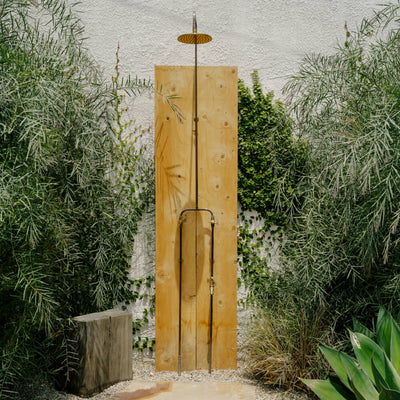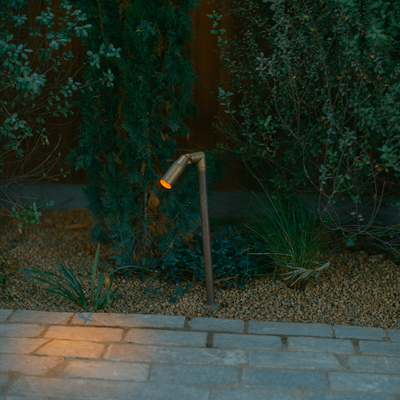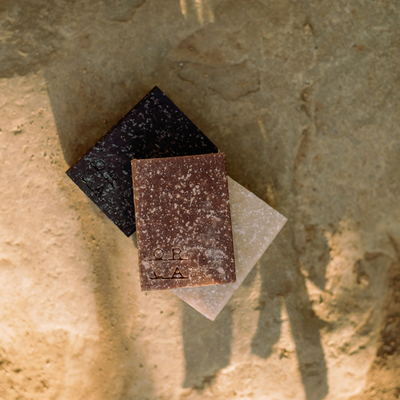Brick Paver Installation Guide
Brick pavers are a timeless outdoor finish that, if installed correctly, will maintain their beauty and utility for decades. This step-by-step guide describes how to install pavers for a range of outdoor uses including patios, walkways and driveways.
Note: This guide is intended to be an accessible overview for homeowners, where no special circumstances are present. We always recommend working with a licensed professional especially when intensive site preparation is needed. A good resource for building professionals is Section 14 of Technical Notes from The Brick Industry Association.
What you'll need
Materials
- Pavers (either standard or thin format)
- Infill aggregate — This is what holds the paver in place. Options are well-graded, washed concrete sand, polymeric or performance sands, decomposed granite or 1/4" gravel/pebble. Note that polymeric sands are NOT permeable due to their chemical binders, which is why ORCA prefers using decomposed granite and stone fines for joints.
- Crushed stone — Also called gravel, road base or crusher run, this helps to create a strong base. The crushed stone should range in size from about 3/4” down to a fine dust and will be compacted down with a handheld tamper or vibratory plate compacter
- Border or edging materials — A border or edging system is necessary to ensure that your pavers remain firmly in place over time. This may be one of the following based on your stylistic preference:
- Brick
- Rigid plastic or metal specifically intended as edging material
- Wood: We recommend 2 x 4 or 4 x 4 pressure-treated or natural redwood
- String or wooden stakes — This is used to align the pavers
Tools
- Flat shovel
- Wheelbarrow
- Garden hose with fine spray nozzle
- Hard garden rake
- Broad-blade chisel, brick splitter or masonry saw — This is for cutting and fitting the brick
- Carpenter’s level
- Wood “screed” strip — This is a 2 x 4 that should be at least 3’ long and is used to create a uniform sand bed depth
- Trowel
- Broom
- Plate compactor — This can be rented from most equipment supply stores
Before you begin
Calculate how much you’ll need of each material.
Pavers
Determine the square feet (length x width) of the area you will be paving and calculate the number of pavers you'll need based on this number and your chosen paver layout. Be sure to add 10% extra to account for wastage or chipped or broken pavers.
Edging Material
Measure the total length of open edges, meaning those not up against a house, curb or driveway. This is the number of feet of edging material you will need. If you plan to edge with pavers standing on end (called soldier position), calculate one paver for each 4” of edge. If using wood or rigid plastic edging, plan on one stake for each 2-3 feet of edge.
Infill Aggregate
The infill you use for your project is measured in cubic yards (1 cubic yard = 27 cubic feet).
For any type of paving project, be it for a patio, walkway or driveway, you will always use a 1” depth of bedding aggregate upon which to lay the pavers. To determine the number of cubic yards of infill aggregate, multiply the square footage of your paving area by .00309.
Example: 200 sq. ft. patio x .00309 = 0.62 cubic yards of infill aggregate
Crushed Stone
Like sand, crushed stone is measured in cubic yards, but unlike sand, the amount of crushed stone you will need depends on your type of paving project. For light-duty projects such as walkways or patios, you will need a 4” depth of crushed stone. To determine the cubic yards of crushed stone needed to create a 4” base, multiply the total square footage by .01235.
Example: For a 200 sq. ft. patio, you will want a 4” base of crushed stone. 200 sq ft. x .01235 = 2.47 cubic yards of crushed stone
For heavy-duty projects like driveways, you will need an 8” depth of crushed stone. To determine the cubic yards of crushed stone needed to create an 8” base, multiply the total square footage by .02469.
Example: For a 200 sq. ft. driveway, you will want an 8” base of crushed stone. 200 sq. ft. x .02469 = 4.94 cubic yards of crushed stone.
How to install
Step 1: Preparing the area
- Contact your local utility companies to determine the location of underground lines to ensure that there are no conflicts in your paving area.
- When preparing the area for paver installation, make sure that the area you intend to pave is at a slight slope to ensure proper drainage. This should be 1/4” per foot slope away from foundations or other permanent structures.
- Outline the area with stakes and string, and be sure to account for the width of your edging material.
- Use a flat shovel to remove only enough sod or dirt to provide a flat, level surface upon which to place the crushed stone base. It's important that dirt or excess soil that is removed and reinstalled should be firmly settled with a plate compactor for an even base.
Step 2: Installing the base
After compacting the soil, distribute the crushed stone base in an even layer into the excavation area. Using the plate compactor, tamp down no more than 4” depth of stone base material at one time. The stone base material should be slightly damp when compacting. This is a critical step that, if not done carefully and thoroughly, will result in the pavers shifting over time.
Step 3: Framing the borders
- Begin by installing, but not anchoring, your edging material. Experiment now with the paver layout you’ve chosen by temporarily laying some of your pavers around the edge of the paving area. The layout should take into account edge cuts and will help determine the best place to start your install. Note that complex designs like herringbone may require a significant amount of your pavers to be cut to size.
- Once you’re satisfied with the placement of your edging system, anchor the edging material by driving spikes at least 8” into the base every 2-3 feet. For wood edging, drill holes and drive the spikes through the middle of the wood. If you're creating a paver edging on a sand set patio, edge pavers should be mortar set on a concrete subgrade curb. This will ensure the pavers do not shift with time. One border can remain unanchored until final paver installation to ensure a tight fit.
- Now remove the pavers you temporarily installed.
Step 4: Installing the sand bed
- For a walkway or other fairly narrow paving area, cut two wood strips to the desired height of sand (½” - 1”). Place them on either side of the paving area. For a wider project like a patio, place the strips every 3' to use as runners to run the wooden "screed" board.
- Now fill the area with sand. The sand can be dampened with a fine mist of water prior to installation to eliminate voids.
- After pouring the sand, use the pipe or wood strips as rails on which to run your “screed” board to ensure a uniform sand depth of 1”. Be careful not to walk on or otherwise disturb the leveled sand.
- Remove the wood strips and fill the indentations with loose sand. Level with a broom or trowel.
Step 5: Laying the pavers
- Start at a corner — if possible, one that includes an edge such as a house, curb, sidewalk or other fixed edge. Lay one run of pavers from the corner along the two adjacent borders. Set the pavers directly onto the sand. Don’t press or hammer them into place. They should fit with about 3/16”-1/2” gap between each paver to account for natural variation in size. As you work, be sure to work from the level of the laid pavers and not the sand as the sand level may need to change as install happens. Be sure to check that the desired level and slope of the top of installed pavers remains consistent. If you disturb the virgin sand, re-level it with a broom or trowel before laying more pavers.
- Continue to lay the pavers in your desired pattern working from your starting corner to the unanchored edge. With the original paver layout on the perimeter as your reference, put a string line or other straight reference such as a level or 2 x 4 board across the front of your laying edge (every 2-3 feet) to maintain alignment. If the pattern wanders somewhat, a trowel, screwdriver or wide-blade putty knife can be used to make small adjustments. Don’t be concerned with small gaps between the pavers — you’ll fill them later with sand.
- Be sure to check the level and alignment of the brickwork frequently during installation to ensure uniformity.
- Once all pavers have been installed up to the final, unanchored edge, cut or saw the remaining pavers to complete the pattern ensuring that the final edge pavers are no smaller than 2” in width.
- Anchor the final border.
Step 6: Finishing up
- Inspect your work, making final adjustments in paver height and joint alignment. Then sweep dry sand into all the joints to lock the pavers into place.
- You may use the plate compactor to further set the pavers and gently tamp them down. Before using the plate compactor, spread a layer of sand over your pavers to prevent direct contact between the pavers and the compactor.
- The sand you swept into the joints will gradually settle. Continue to sweep additional sand into the joints as necessary over the next few rainstorms until the bricks are fully stabilized.






